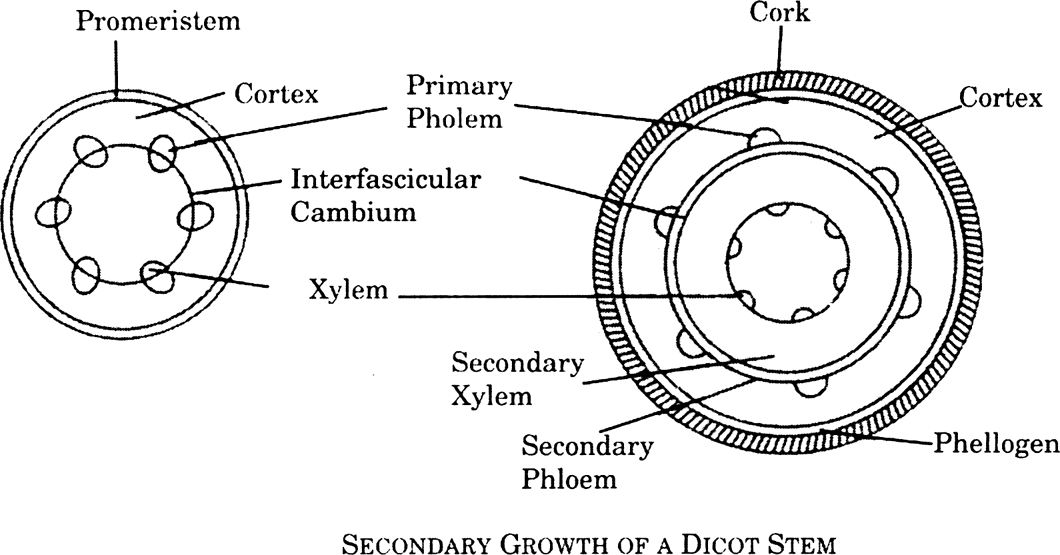 Short Answer Type
Short Answer TypeState the most significant contribution of the following Scientists :
(i) Hans Berger
(ii) Dixon and Jolly
(iii) J.B. Lamarck
(iv) William Harvey
Mention the chromosomal abnormalities concerned with the following conditions in humans:
(i) Turner’s Syndrome
(ii) Klinefelter’s Syndrome
(iii) Down’s Syndrome
 Long Answer Type
Long Answer Typea) Give any four anatomical difference between monocotyledonous and dicotyledonous leaf.
(b) Explain the phases of growth in meristem of plants.
(c) Draw a neat labelled diagram of a matured anatropous ovule before fertilization.
(a) Give an account of activity of cambium in the secondary growth of the stem.
(b) Write three differences between C3 and C4 cycles.
(c) Mention two advantages each of the following:
(i) Hydroponics (ii) Turgidity to plants (iii) Cross pollination
(a) Activity of cambium in the secondary growth of the stem:
(i) Formation of cambium rings: The vascular bundles of dicot stem have stripes of cambium in between xylem and phloem and is known as intrafascicular cambium.
During secondary growth, the cells of medullary rays in a line with the intrafascicular cambium develop merismatic activity and from stripes of cambium called interfascicular cambium. Both these form cambium ring or phellogen.
(ii) Formation of secondary tissues : This cambium ring becomes active a whole and starts cutting new cells. The cells differentiate to secondary xylem and phloem.
(iii) Secondary Medullary rays : Certain cells of cambium form some narrow bands of living parenchyma cells passing through secondary xylem and phloem are called secondary medullary rays.
(iv) Annual rings : The growth in successive years appears in the form of concentric rings or annual rings.

(b)
| C3 Plants | C4 Plants |
| RuBP is the CO2 acceptor. | PEP is the CO2 acceptor |
| First stable product is phosphoglyceric acid. | First stable product is oxaloacetic acid. |
| Kranz anatomy is not present | Kranz anatomy is present |
| Process is slow and less efficient | Process is fast and efficient |
(c)
(i) Advantages of hydroponics :
a. The importance of a particular element can be studied using the process
b. Through hydroponic gardening; plants can be grown anywhere as long as their growth requirements are met.
(ii) Turgidity to plants :
i. Turgidity helps to maintain the shape of the leaves.
ii. Turgid condition prevents wilting and allows more exposure to the sunlight.
(iii) Advantages of Cross pollination :
Cross pollination helps in creating the variation in species of plant.
Cross pollination results in the formation of new combinations.
(a) Explian the movement of water cell to cell across the root from the soil to the xylem.
(b) Draw a labelled diagram of T.S. of hyaline cartilage. Write a brief note on its functions.
(c) What is the full form of ADH ? How does ADH control osmoregulation in human kidney?.
(a) Explain the process of oogenesis in humans.
(b) State three differences between red muscle fibre and white muscle fibre.
(c) Mention a cause and symptom of each of the following:
(i) Amphysema (ii) Renal calculi (iii) Diarrhoea
(a)Describe the structure of an artery and vein. Explain how their structure helps in their functioning.
(b) Write three differences between short day and long day plants.
(c) Name the 2nd, 3nd and 8th cranial nerves in man and write a function of each.
